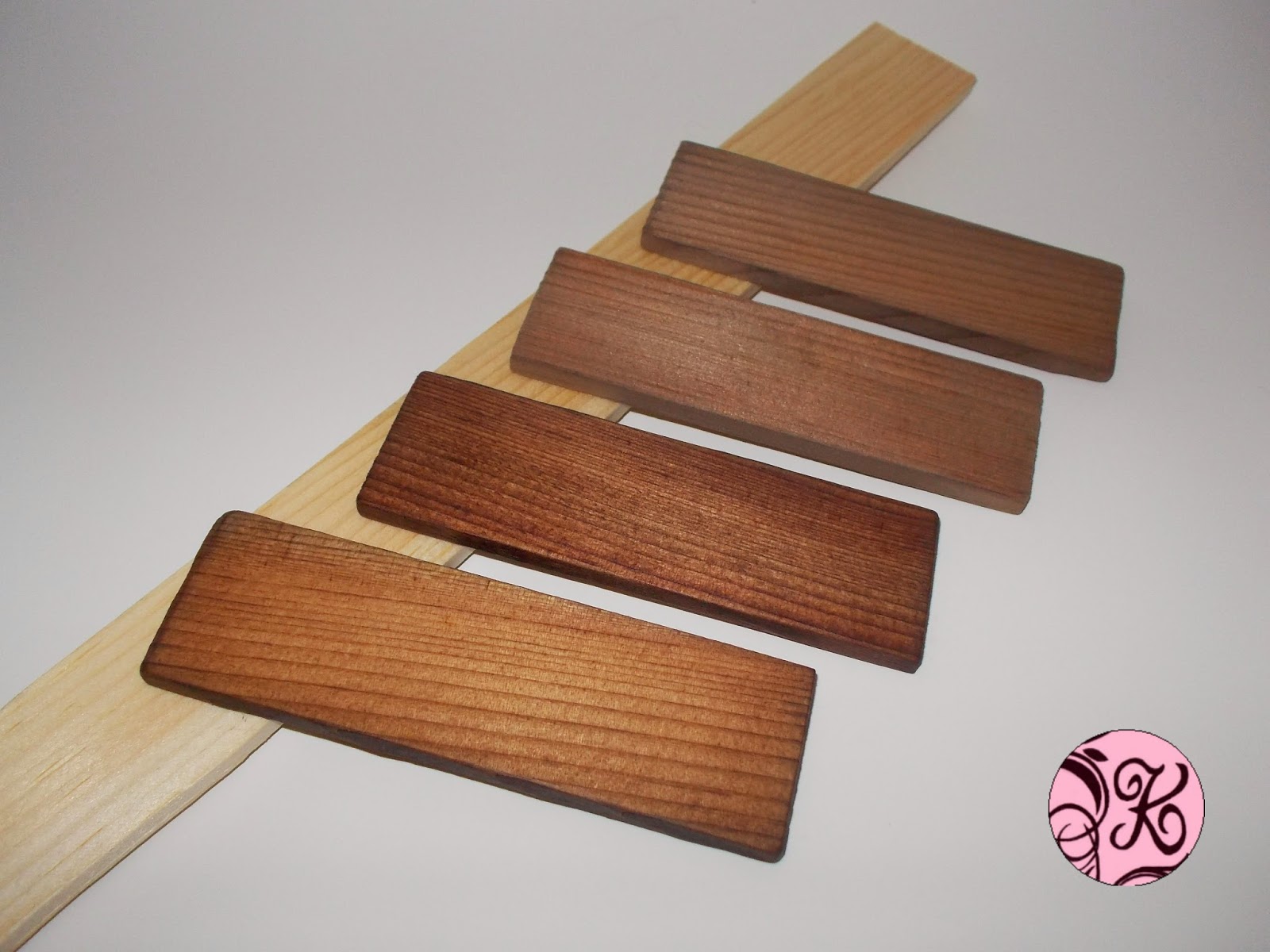Well, summer has struck, which makes me cranky. I don’t like
heat, I’m far happier in the winter. But, summer (for me at least) means lots
of indoor time, hiding from the sun, which means lots of crafts!
As part of my ongoing endeavours to make my apartment more
pretty, I managed to DIY a new door number that looks much nicer than the one
that the landlord stuck to the door who knows how many years ago.
Here’s the ugly landlord number:
And here’s what my little plaque looks like:
To do this project, I used some thin pieces of wood that I
stained using tea, vinegar, and steel wool:
Other materials used include water, E6000 glue, finishing
wax, an old sock, a hand saw (to cut the wood to length), two tongue depressors,
and a foam brush.
For the wood pieces, I used two paint sticks that I had
laying around the house, so the total cost for this project was simply the cost
of the house number, which I got from my local hardware store for about $3.
First thing first, I needed to make my stain out of steel
wool and vinegar. The chemistry behind this staining method involves the
vinegar oxidizing the steel wool, and producing a rust, so really I rusted my
wood rather than stain it. But it looks like beautiful stain, and doesn’t have
terrible fumes, and it’s free, so I’m all for it.
To make this stain, soak a little wad of steel wool (about
the size of a pingpong ball when it’s balled up) in some white vinegar for at
least 12 hours. This is what mine looked like after 24 hours:
After this project was finished, I decided to keep the stain
for future projects. After about 3 days the steel wool had been reduced to
crumbs at the bottom of the jar and the vinegar had turned the colour of very
strong tea. I tried out the stain on some different wood and it worked just the
same.
Anyways, the day after I began soaking my steel wool, I cut
up my paint sticks into as close to the same size as my unskilled hands could
manage:
Then some more chemistry comes into play. Before staining I
prepped my wood pieces by brushing them with tea. The tannins in tea help to
open the pours of the wood so that it soaks up the stain more uniformly. Apparently
tea is a pro-tip for all staining projects, not just steel wool/vinegar stain.
The tea did not change the colour of the wood at all, it
just soaked into the grain. Once the wood was dry I started applying the steel
wool stain. When using a fresh mixture the liquid is clear, so you will not see
the wood change colour immediately. As the stain dries, you will see the wood
darken. I did five coats total, but after three coats I didn’t notice any
further change in colour. I guess three coats is what it takes. This is how it
looked after staining:
I let the wood dry overnight, then I polished it with
finishing wax. To do this, I put a ball of wax in the toe of an old sock and
rubbed it onto the wood. Below you can see the original paint stick underneath,
the stained wood at the top, and the waxed wood on the bottom.
I used tongue depressors as a backing to glue the wood
pieces to. Because of the wax, regular glues, hot glue, or wood glue will not
stick. E6000 that puppy.
Since the wood was too thin for the screws that came with my
house number, I used E6000 to glue that on as well:
Then, to finish it off, I filled the screw holes with E6000,
placed little plastic caps over them, and painted them black to match the
number.
I used 3M command hook stickies to hang the plaque (you can
buy those stickies without the hooks you know). I just love the way it turned
out. And my neighbours are very impressed with my handy-work.














Your door will certainly stand out in the crowd!!!
ReplyDelete